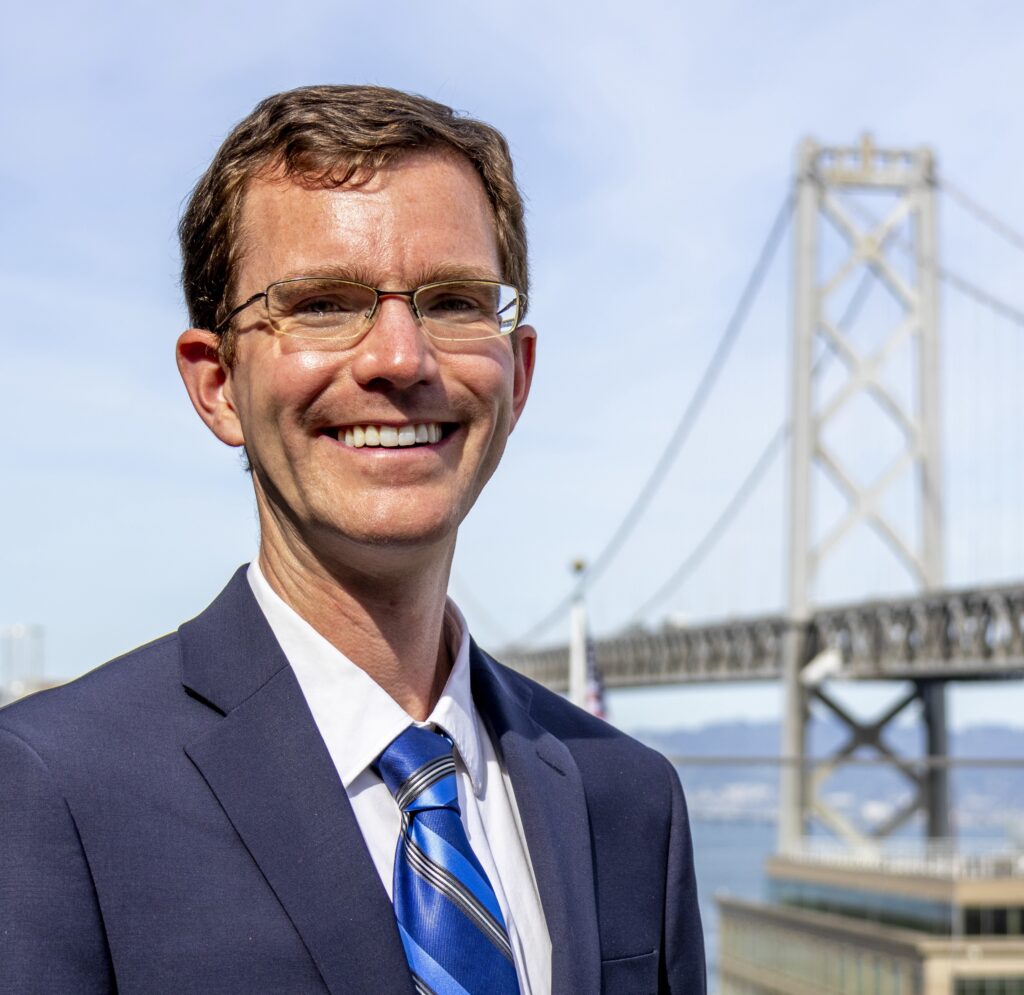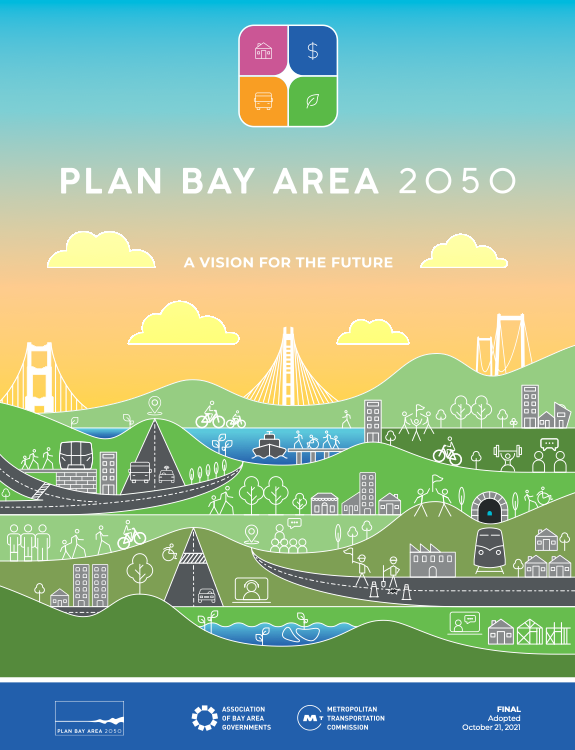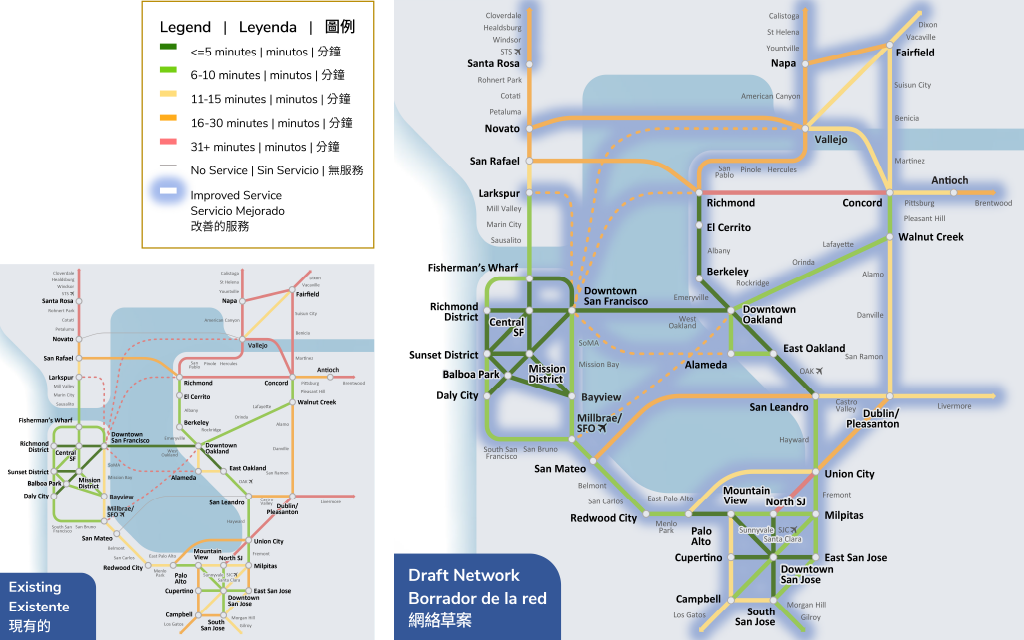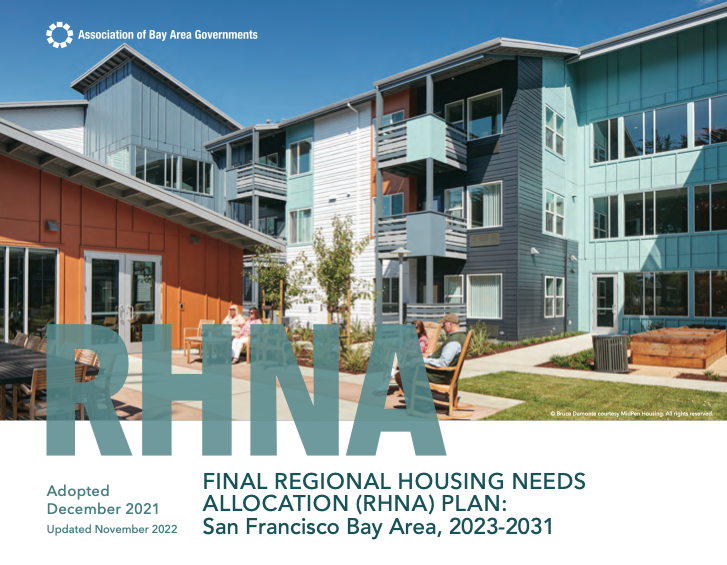By Dhawal Kataria, AICP, RSP, Associate Editor, October 10, 2024
Dave Vautin is the assistant director of Major Plans at the Metropolitan Transportation Commission (MTC) and the Association of Bay Area Governments (ABAG) based in San Francisco. With over a decade of experience in regional planning, he leads a team focused on advancing key transportation, housing, and environmental initiatives. From 2017 to 2021, Dave spearheaded Horizon and Plan Bay Area 2050, which explored resilient and equitable strategies via “what if…?” scenario planning to create a bold new regional vision. Previously, he led data and performance initiatives for the organizations. During that time, he led the development of the award-winning Vital Signs performance monitoring tool and was chair of the National Academies Transportation Research Board Committee on Performance Management. Dave received his Master of Science degree from the University of California, Berkeley, and his Bachelor of Science degree from Cornell University.

Tell us about MTC and your current work.
MTC serves as the Bay Area’s metropolitan planning organization, focusing primarily on transportation. In parallel, ABAG plays a broader role as the region’s council of governments, covering land use, housing, and environmental resilience. Our team serves both organizations in their shared mission to create a better Bay Area for all.
In recent years, I led a major update to the region’s long-term blueprint for growth and infrastructure, known as Plan Bay Area 2050+, which was adopted in 2021. Our team also works on several related long-range planning efforts, including the Regional Housing Needs Allocation (RHNA) process, which identifies how local jurisdictions can address the Bay Area’s housing crisis. Additionally, we developed the Sea Level Rise Adaptation Funding and Investment Framework in partnership with the Bay Conservation and Development Commission (BCDC), outlining financial strategies to ensure climate resilience over the next 30 years. Last but not least, we also manage various transportation initiatives, such as the Next Generation Freeways Study, which explores the potential for all-lane tolling, and the Transit 2050+ initiative, aimed at revitalizing public transit post-COVID. It’s an exciting and dynamic portfolio of regional planning efforts.
How has the regional planning process evolved in recent years, and what does the future hold for our region?
When I first started at MTC, the focus was primarily on transportation. However, that has significantly evolved, and for the better. Land use, housing, climate resilience, and social equity are at the core of our planning efforts–alongside traditional transportation topics. For example, many of our transportation challenges stem from the fact that people can’t afford to live near where they work. Similarly, while our climate issues are driven by vehicle emissions, those emissions are a byproduct of car-centric land use patterns, which we’re actively working to change. Plan Bay Area is now a much more comprehensive vision for the future of the Bay Area, connecting these deeply interconnected topics. Our holistic approach focuses on crafting and implementing strategies that local, regional, state, and federal governments can advance together to set the Bay Area on a successful path forward.

How has the focus on equity shaped regional planning efforts?
Starting with housing, we’ve focused on actively furthering fair housing in both the RHNA process and Plan Bay Area. Certain areas in our region have been historically burdened and seen systemic disinvestment, while others have been more exclusionary and less accommodating to affordable housing. Between 2019 and 2021, we took a hard look at these disparities and worked to encourage more growth in jurisdictions that could contribute to advancing fair housing via RHNA. This effort has influenced housing elements across the region, pushing areas that had previously built very limited housing—especially for lower-income residents—to do more in the decade ahead to help promote equitable outcomes.
On the transportation side, we’ve done an extensive analysis of our transit priorities to determine how best to serve working-class communities. Time and again, we’ve found that investing in core services—such as making today’s bus lines more frequent and reliable—yields some of the most significant equity benefits. Through our Transit 2050+ initiative, we’ve made a concerted effort to work with operators to prioritize these investments. Even with fewer financial resources available for transit compared to years past, we committed to preserving and accelerating bus system improvements because they often have the greatest positive impact on those who need them most.
What are Equity Priority Communities, and how do they influence investment decisions?
To conduct our federal and state equity analyses, we need a framework to assess how investments and policies are prioritized. Since 1999, MTC/ABAG has identified “Equity Priority Communities,” focusing primarily on areas with high concentrations of lower-income individuals and communities of color. This helps us geographically pinpoint where investments should be made to ensure we prioritize these communities.
However, this framework alone is not enough to fully grasp the region’s equity challenges or to understand equitable investment, as our transportation system operates as a network. There are instances where investments outside these priority communities can still advance equity. For example, a specific bus line might serve predominantly low-income passengers, even if it operates primarily in a wealthier community. Conversely, simply investing in an Equity Priority Community does not always guarantee that that project responds to the highest needs of the residents.
To address these complexities, we’ve expanded our approach by incorporating user-based analyses to gain a more comprehensive view of equity. Recognizing the evolving nature of these challenges, we plan to re-envision this framework starting next year to reflect the latest techniques and approaches related to social equity.
Why haven’t we been able to reach the standards of European transit systems?
There are a couple of key points to consider. First, it’s important to recognize that the region spends billions of dollars every year just to keep today’s transit systems operating smoothly. However, revenues needed to both maintain and improve our transit system took a significant hit during the pandemic, largely due to reduced farebox revenues from major rail operators as work-from-home became more common. As a result, the region is now facing a fiscal cliff, putting today’s transit services at risk of cuts.
While the region is exploring new revenue sources to maintain service levels and ideally accelerate toward a world-class standard, there are also potential actions that could be taken at the state and federal levels to better fund Bay Area transit. Currently, federal and state governments tend to disproportionately invest in new capital projects rather than helping to improve service quality through strategies such as funding frequency boosts or making fares more affordable. As we move beyond the pandemic, it’s crucial to ensure that today’s transit investments are aligned with the most essential needs of Bay Area riders.

How do you balance the need for long-term vision with the immediate challenges?
My team leads our long-term planning efforts to establish “a North Star” vision for the nine-county region, but we place equal importance on near-term implementation planning. As part of the Plan Bay Area process, we propose 25-year strategies, and we identify specific actions that MTC and ABAG can advance in partnership with local, state, and federal partners over the next five years.
For example, in the transit space, MTC has been building a Regional Network Management team that collaborates closely with transit operators to advance lower-cost, high-impact initiatives across the region. This includes improvements such as enhancing signage, mapping, and wayfinding at transit stations, funding low-cost bus priority infrastructure like queue jumps and signal priority, and investing in service improvements like paratransit and schedule coordination. These efforts aim to make the transit network feel more unified and integrated, and they are all examples of long-range planning translating into near-term action.

Which project are you most excited about, and why?
My team has been working diligently on our Next Generation Freeways Study over the past few years, tackling the complex challenge of making highways more reliable and efficient while reducing greenhouse gas emissions and vehicle miles traveled. All-lane tolling is a central aspect of this discussion, although we recognize it’s a complex and often controversial topic.
It’s been an interesting journey exploring various pricing typologies and complementary strategies, especially given our mission to develop an equity-first pricing framework. This a core climate strategy in Plan Bay Area 2050, and it aligns with the California Transportation Plan and several other regional-scale efforts (including Los Angeles). Starting these conversations and getting the ball rolling has been valuable and engaging. Many years of work are ahead, but we’ve initiated an important policy dialogue with partners and the public about the need for expanded pricing.
What advice would you give to aspiring planners?
I would say it’s important always to remain open to new learning opportunities. My academic background is in transportation engineering, and when I first joined MTC, I came in as a transportation analyst and planner. However, as the agency expanded into new areas, like housing and resilience, those new programs and initiatives gave me countless opportunities to learn and grow. It’s essential for young professionals to embrace continual growth and development. Learning isn’t something that stops after college or graduate school—it’s an ongoing process that allows you to thrive, keep your work fresh, and remain engaged with new challenges.
What makes regional planning, particularly working at MTC, so exciting, and why should someone consider it as a career?
MTC/ABAG is an exciting place to work. You’re not operating at the federal or state level, where you might feel distant from on-the-ground project delivery, but you’re also not dealing with the day-to-day issues that emerge at the local level. It’s a nice balance where you can focus on big-picture policy while still staying connected to the communities you’re serving. Working at the metropolitan scale, especially in the Bay Area—a region with nearly 8 million people, 101 cities, and incredible diversity—is fascinating. It’s a unique and special place to work, and being part of the effort to create a better Bay Area for all, across all walks of life, is incredibly fulfilling.
Share a fun fact about yourself.
I have now visited 409 of the 431 national park sites across the country, from the coral reefs of the Caribbean to the glaciers of Alaska (and nearly everywhere in between).

About the Author

Interviewer Dhawal Kataria, AICP, RSP, is a senior planner at Kittelson & Associates and an Associate Editor for Northern News. All interviews are edited.
